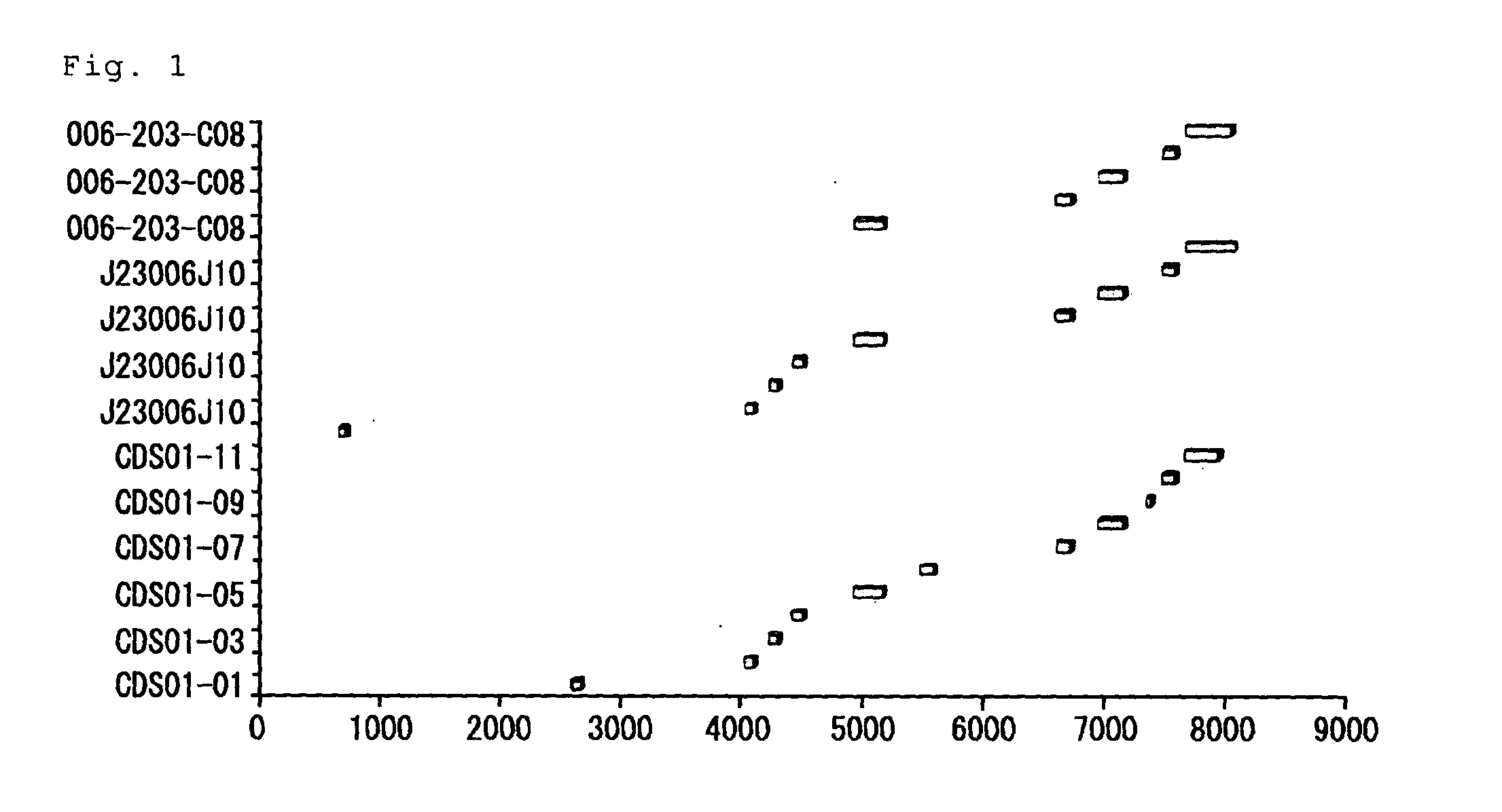Full-length plant cDNA and uses thereof
a plant cdna and full-length technology, applied in the field of full-length plant cdna, can solve the problem that the sequence data is not sufficient as data for gene function analysis, and achieves the effect of reducing the number of genes
- Summary
- Abstract
- Description
- Claims
- Application Information
AI Technical Summary
Benefits of technology
Problems solved by technology
Method used
Image
Examples
example 1
Acquisition of cDNA Clones
(1) Starting Materials and Method For Constituting a Full-Length cDNA Library
[0178] The rice genome project of Japan has obtained EST clones from various tissues and organs at each developmental stage ofrice. However, most of them were derived from non-full-length cDNA libraries. ESTs are effective in cataloging the expressed genes, but not suitable for functional genome analysis. Starting materials for the library construction are extremely important to collect as many types of clones as possible. Table 1 is the list of starting materials for constructing a library suitable for functional genome analysis.
TABLE 1LibraryStarting materials for Full-lengthNocDNA library constructionSeedlings two weeksafter germination1Normally grownGreen Shoot2Normally grownRoot3Dark grownEtiolated Shoot(Radiation and Oxidative)4+UVB550 J / m2Calli ten days after transfer to new medium5Normally grown(Temperature)6+coldcold treated (at 6° C.)7+heatheat treated (at 45° C.)(H...
example 2
Functional Classification of Full-Length cDNA Clones
(1) BLAST Search
[0183] Sequence homology search by BLAST was conducted asfollows. Sequence data from 10 divisions of NCBI's GenBank (as of June 15, 2002; release version 130) were downloaded, and searches were carried out using BLAST N and BLAST X programs using 28,469 sequences as query (2002 / 7 / 20). Search subjects are the following 10 divisions: PRI, ROD, MAM, VRT, INV, PLN, BCT, VRL, PHG, and PAT. Sizes of searched database were as follows:
[0184] BLASTN: 1,212,780 sequences : 1,998,000,464 Letters
[0185] BLASTX: 623,580 sequences : 327,145,996 Letters
[0186] Alignment pattern was checked for sequence homology, and a similarity threshold of E−10 was used. Because of BLAST N search, 2603 cDNA clones were identical to already-registered rice genes, and classified into the identical rice genes. As a result ofBLAST X search, 5,607 clones were homologs of already known rice genes, 12,527 clones were homologous to already-known ge...
PUM
| Property | Measurement | Unit |
|---|---|---|
| Fraction | aaaaa | aaaaa |
| Fraction | aaaaa | aaaaa |
| Fraction | aaaaa | aaaaa |
Abstract
Description
Claims
Application Information
 Login to View More
Login to View More - R&D
- Intellectual Property
- Life Sciences
- Materials
- Tech Scout
- Unparalleled Data Quality
- Higher Quality Content
- 60% Fewer Hallucinations
Browse by: Latest US Patents, China's latest patents, Technical Efficacy Thesaurus, Application Domain, Technology Topic, Popular Technical Reports.
© 2025 PatSnap. All rights reserved.Legal|Privacy policy|Modern Slavery Act Transparency Statement|Sitemap|About US| Contact US: help@patsnap.com

